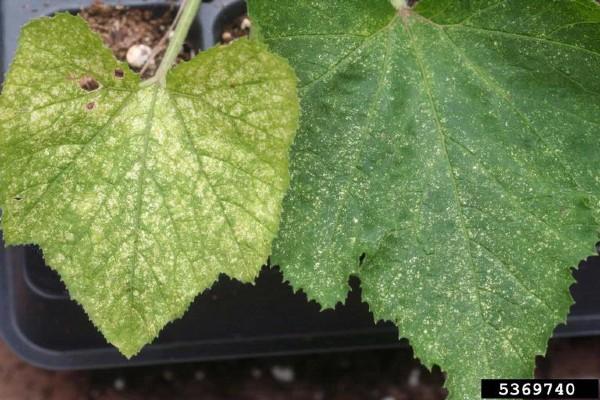
Spider mites. Photo: Natalie Hummel, Louisiana State University AgCenter, Bugwood.org
Spider mites are very tiny plant pests that are related to spiders. They feed only on plants. The colors may be reddish or light green with two dark spots. They are about the size of a period on a page. Spider mites can be a problem all year indoors and have a very broad host range. Spider mites suck the chlorophyll from leaves which results in fine white spots or stipples on the leaves. Heavy feeding causes yellowing, browning and eventual death of leaves. Some spider mite species produce webbing that covers the leaves and stems when populations are high. The two-spotted spider mite feeds mainly on the undersides of the leaves. Spider mites are generally a problem during the warm summer months.

Spider mite stippling injury. Photo: Whitney Cranshaw, Colorado State University, Bugwood.org

Spider mite injury on the underside of a Phlox leaf. Spider mite eggs and cast skins are along the main vein. Photo: Bruce Watt, University of Maine, Bugwood.org
Management
If mites become a problem, periodically wash down the plants with a strong spray of water and be sure to get good coverage of the lower leaf surfaces. When control is needed, consider releasing predatory mites, which are commercially available. Typically, suppliers (found online) provide information, including releasing instructions, regarding the use of the predator mites that they carry. Encourage predatory mites by avoiding toxic sprays in your landscape.
Insecticidal soap or a horticultural oil may be used to control mites on groundcovers. Make sure the plant is on the label to prevent any damage from the spray. Also, spray early in the morning when the temperatures are cool and the plants have had an opportunity to rehydrate from the day before. Do not spray plants that have sustained heavy mite damage as they may be further damaged by the spray application.